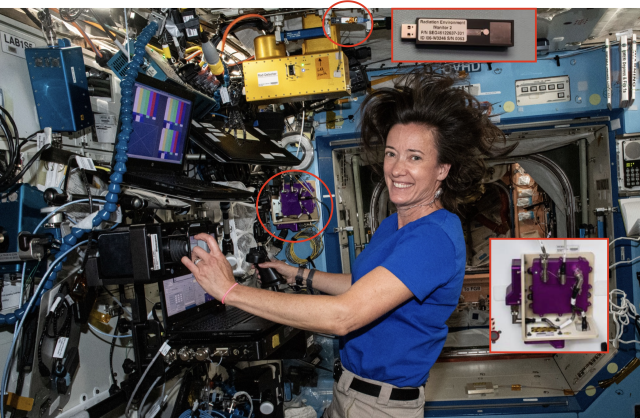Timepix Used for Space Radiation Measurements During Artemis I Lunar Mission
Characterisation of the space radiation environment in the crew cabin was a key objective of Artemis I, an uncrewed Moon-orbiting mission that took place in 2022. The Orion spacecraft for Artemis I carried a variety of detectors for radiation measurements, including the Timepix-based NASA Hybrid Electronic Radiation Assessor (HERA).

NASA astronaut Megan McArthur in the International Space Station – along with the HERA detector (purple box in the back) (Image: NASA)
Developed by CERN, as part of the Medipix2 collaboration, Timepix detectors are extremely small but powerful particle trackers. Over the past decade, they have been used in various space applications from detection and track visualisation of radiation and cosmic rays in open space to astronaut dosimetry.
The analysis of the data collected from the detectors during the Artemis I mission, including HERA, were published in 2024. These measurements can be extrapolated to model future Mars missions for a similar point in the solar cycle, leading to experimentally derived dose equivalents that are about 30% lower than those reported in the literature.
This is in line with expectations, since Orion is a heavily shielded spacecraft, and therefore shows large improvements in radiation exposure over planetary science missions. However, space programmes have several reasons to prefer long missions using light vehicles to short missions using heavily shielded vehicles. Details of future mission will heavily depend not only on shielding, but also on trajectory, modulation of the galactic cosmic ray environment with the solar cycle and severity of solar particle events. Effective management of radiation risk will remain a key challenge for human space exploration, and HERA will continue to provide essential information onboard many future missions.